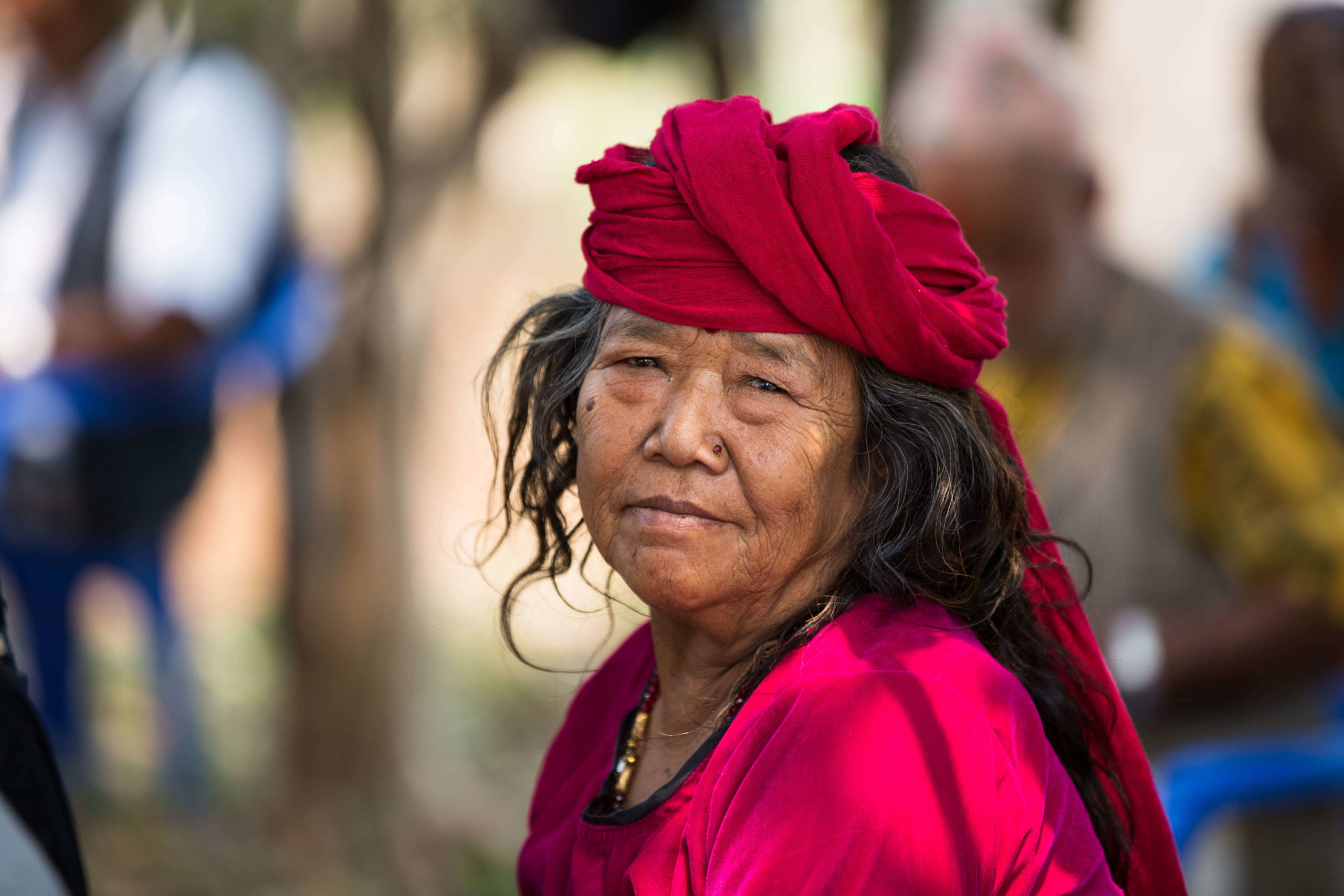
A Day in Kumpur
Written by: Hannah Clift
The village of Kumpur, Dhading is just 75 kilometers from Kathmandu, but more often than not it’s been without access to reliable information from the government. Until very recently, any visitors to this small community could only reach it by crossing a nearly 155m long tuin (a rope and pulley aerial ropeway) over the Trishuli River. Just this year it was finally replaced by the Ministry of Federal Affairs and Local Development with a suspension bridge making it a bit easier for the Citizen Helpdesk team when we arrived on April 12th for a community meeting.

Community Frontline Associate (CFA) Shankar Shrestha who was to host the meeting prepared a clearing for the nearly 50 community members who were beginning to gather – all but 7 were women. Representatives from the police, National Society for Earthquake Technology (NSET), Safer Migration (SaMi), and a radio-journalist joined the group.
After introductions, citizens immediately began voicing concerns. Even a full two years after earthquakes devastated Nepal there was no shortage of complaints about aid and reconstruction difficulties. Many of those who had received government grants still found them insufficient to rebuild and a lack of trained masons slowed progress for others. These issues were handled competently by NSET representatives who answered questions, distributed posters displaying criteria for rebuilding homes, and promised to connect community members with masons.

This meeting was landmark, however, in that it was one of the first meetings since Citizen Helpdesk formally announced its focus on foreign labor migration in Nepal.
Fifteen households at the meeting had a family member working or who had worked abroad – or they themselves had gone. Almost all of them went to Gulf countries or Malaysia, and many received lower salaries than those promised by the agencies. Only four women had paperwork for their husbands or relatives abroad.
One mother eagerly shared her story. Her son left for Malaysia nearly a decade ago, and for 9 months everything went well: he contacted her and his family frequently, was reportedly in good health, and sent one remittance. All of a sudden, communication ceased. Her attempts to find out what happened to him left her even more confused. The manpower agency told her they had no record of any Nepali working in construction in Malaysia. She had no way to contact the company in Malaysia and no idea how to begin the process of finding her son. All of the paperwork went with her son or remains with the manpower agency; the only thing she has of him is a single photo.
Without answers, a paper trail or even a body she is unable to find closure or access relief funds.
These stories are mild compared to many you can find across Nepal. The reality is that there is a severe lack of information and transparency in the process of foreign employment for Nepalis. Citizen Helpdesk in partnership with several other organizations hopes to connect vulnerable Nepali citizens with the services they need to improve this process around the country.
As for the mother, now that her case has been brought to the attention of Safer Migration and our CFAs through the community meeting, she has several people actively working on finding her son. By bringing together civil society organizations like SaMi, LAPSOJ, Center for Social Change (CSC), People Forum and Center for Migration and International Relations (CMIR), as well as the Department of Foreign Employment, we’re seeing even more potential to solve the challenges of foreign employment.
The community meetings are vital to ensuring that everyone in Nepal has access to the necessary information regarding foreign labor migration. Going forward, Citizen Helpdesk will be making this an even greater focus, and community meetings could very well be the right platform for addressing other pervasive issues as well.





